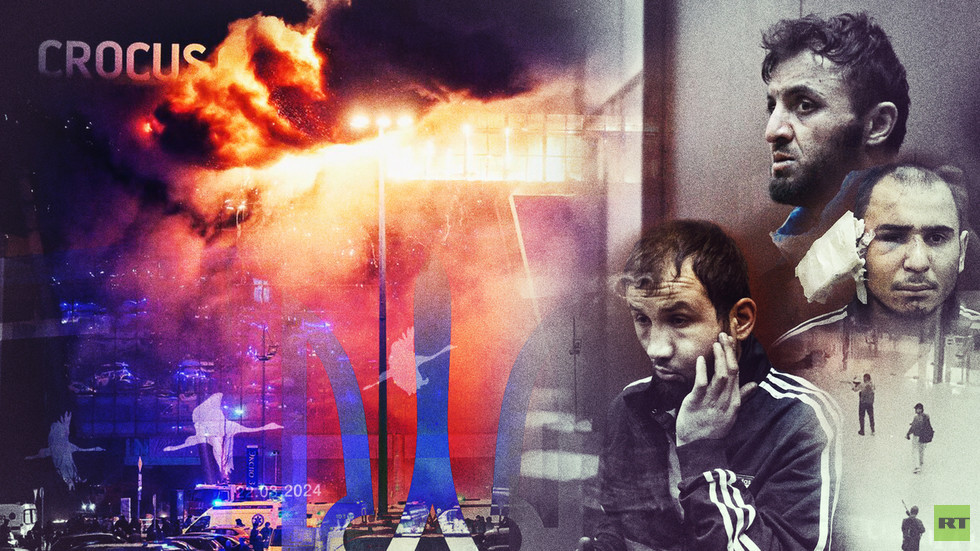By the Directorate 4 team, an analytical and monitoring center researching Islamic radicalism and fundamentalism
On March 22, Russia suffered one of the worst terrorist attacks in recent history, in the course of which 137 people were killed and 182 others were injured. The four terrorists who carried out the attack chose one of the largest exhibition and concert venues in the country, Crocus City Hall, in the city of Krasnogorsk on the outskirts of Moscow, which hosts large events every day.
Even though the investigation is still ongoing, the West has already claimed that the Islamic State (IS) is responsible for the tragedy. This was first reported by some media outlets, including Reuters and CNN, and was later picked up by Western officials. For example, on Monday, this was stated by White House Press Secretary Karine Jean-Pierre.
However, when we compare this terrorist attack with other IS attacks, we notice more differences than similarities.
Summary (read article for full text):
-
Early on IS’s mode of operation was to call believers to join them in the Caliphate in Syria
-
However as they lost territories they began to call on followers to conduct attacks abroad where they lived
-
Their standard for claiming attacks was as simple as someone contacting a bot and swearing an oath, often the perpetrator was the only one who died but it didn’t matter and this is also why it occasionally took credit for attacks it had no involvement in.
-
The attack at Crocus does not match their pattern of behavior
-
Four people who had not previously known each other were recruited to carry out the terrorist attack. One of them was in Türkiye in February, and from there he flew to Russia on March 4.
-
According to unofficial information, he met with a certain “Islamic preacher” in Istanbul. However, it is also known that the terrorists corresponded with the “preacher’s assistant.” According to Fariduni, this anonymous person sponsored and organized the terrorist attack.
-
After arriving in Russia, the main suspect visited Crocus City Hall on March 7 in order to see the site where the crime was to be committed. From this, we may conclude that the attack was to take place soon after his arrival from Türkiye. On the same day, the US embassy in Russia warned its citizens to avoid large gatherings “over the next 48 hours” due to possible attacks by extremists.
-
None of the terrorists planned to “join the Houris in paradise,” as is usual for IS followers.
-
After shooting people in Crocus City Hall and setting the building on fire, they did not attack the special forces which arrived at the scene and instead got in a car and fled from Moscow. Neither did they wear “suicide belts” – a characteristic detail of IS followers who are ready to die after committing their crime.
-
Another detail which is uncharacteristic for IS is the monetary reward promised to the terrorists. The payment was supposed to be made in two installments – before and after the attack. The terrorists had already received the first payment, amounting to 250,000 rubles ($2,700).
-
The most important detail is the location where the terrorists were detained. Traffic cameras allowed intelligence services to monitor where they were headed. They were eventually detained on the federal highway M-3 Ukraine – a route which used to connect Russia and Ukraine but lost much of its international importance after the deterioration of relations between the two countries in 2014, and particularly after the start of Russia’s military operation in 2022.
-
The terrorists were detained after passing the turn to route A240, which leads to Belarus. At that moment, it became obvious that there was only one place where they could be headed: Ukraine.
-
Despite the fact that the terrorists were armed, only one of them, Mukhammadsobir Fayzov, put up resistance. All of the terrorists were detained alive, which was most likely an order given to the security forces involved in the operation. However, as we mentioned above, the terrorists themselves did not want to die.
-
This, too, is uncharacteristic for IS, since someone who carries out a terrorist act, especially an outsider, is always considered “disposable.” Even if he makes it out alive, no one will help him. Moreover, in earlier years, IS usually didn’t take responsibility for an attack if the perpetrator remained alive, as this could harm him during the investigation. However, later the organization no longer cared about this due to the deplorable state in which it found itself.
-
All this comes down to the fact that compared to other attacks carried out by IS in the past few years, this one is strikingly different when it comes to the level of preparation, detailed planning, and financial compensation.
-
Since 2015, it has been known that the Security Service of Ukraine tried to recruit radical Islamists with the goal of carrying out sabotage and terrorist attacks, etc. on Russian territory. Ukraine’s intelligence services were also active among the terrorists in Syria.
-
Ukraine is the place of residence not only for many terrorists, but also IS administrators and those who sympathize with the terrorists. It has also been a way of crossing into the EU of at least one Islamic extremist terrorist who intended to carry out an attack in the west according to western intelligence.
-
The quick and repetitious insistence from the west with which they (who were in no position to know all the facts not being the victim country or in possession of the terrorists or the site of the crime) and their media have insisted that IS and IS alone did this and that Ukraine was not in any way responsible seems to strongly indicate they are hiding something and attempting to plant the seeds of doubt already for any connection that the investigation may discover.


